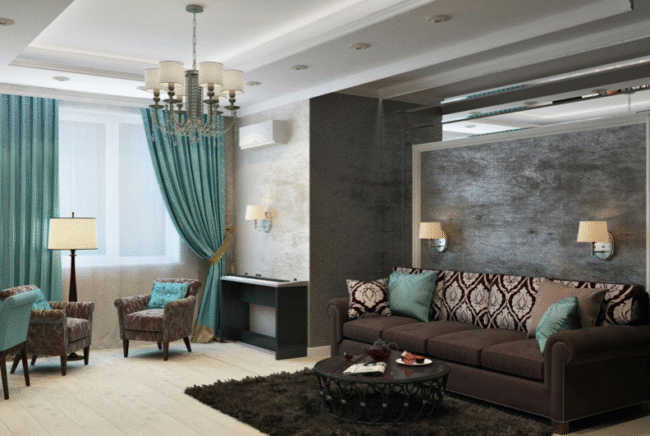
Setting the Scene: Designing for Extreme Climates
Picture a home teetering on the edge of a canyon, rugged rocks gleaming in the burn of the midday sun. This isn’t postcard territory—it’s survival architecture. Cookie-cutter suburban plans fail here; the elements eat them alive. Dry winds, searing heat, and shocking nighttime chills demand designs that respect the land’s extremes. But here’s the opportunity hiding within the challenge: a responsive home can become a haven, bridging raw nature with human comfort. Architecture isn’t just shelter in this environment. It’s strategy, adaptation, and art.
Embracing Southwestern Styles in Home Blueprints
Southwestern design isn’t kitschy turquoise accents and stamped leather furniture. It’s grounded. The sunburnt reds, ochres, and dusty browns mirror the land itself, while textures like adobe, raw timber, and stacked stone add depth. These elements don’t anchor you to the past, though. When paired with crisp, modern lines and minimalistic detailing, they pull the aesthetic forward. Think whitewashed walls outlining a rugged timber beam; or expansive glass framing jagged horizon lines. The genius lies in borrowing without mimicry—building something timeless that whispers its roots rather than shouting them.
Optimizing Floor Plans for Sunlight and Ventilation
Desert dwellings aren’t just about surviving heat. A deftly designed home turns climate into an ally. Start with window placement optimized for passive solar gain—soaking abundant winter light but shielding interiors from the summer’s worst. Overhangs aren’t decorations but defenses, coupled with ventilation routes that direct fresh air, not blistering gusts. Zoned layouts separate living areas to reduce heat load. Want the most underrated weapon in your arsenal? Adaptable spaces. A screened porch morphs into a sunroom as seasons shift. Resourceful layouts outsmart raw elements without breaking a sweat.
Selecting Durable Materials for Arid Terrain
Deserts aren’t forgiving. Materials fail fast when builders cut corners. Stucco excels, as it’s UV-reflective and crack-tolerant, but it needs a craftsman’s hand to avoid premature degradation. Insulated concrete forms? Nearly indestructible, insulating like a fortress, but with a premium price tag. Reclaimed wood adds character but demands constant upkeep. Choose based on durability, not the fashion of the month. Repair-free for a decade or more? That’s the benchmark. The goal isn’t just keeping the sun out. It’s choosing elements steadfast enough to defy the land’s blistering personality yet sustainable enough to feel moral about.
Integrating Seamless Indoor–Outdoor Living
In the desert, barriers between inside and outside aren’t just aesthetic—they’re outdated. Sliding glass walls dissolve boundaries, giving you canyons for wallpaper. Courtyards act as sanctuaries, funneling cool breezes while warding off biting sandstorms. Covered patios and pergolas tame the uncontrollable sun, creating microclimates that extend livable spaces year-round. The trick? Making the built environment disappear into the natural one. Native plants, winding stone paths, and minimalist landscaping frame the home as if it materialized there, second nature to the surroundings.
Maximizing Energy Efficiency in Heat-Prone Homes
In desert homes, efficiency isn’t a luxury—it’s survival math. Insulation first. Plug the energy leaks. Reflective roofing helps; so does high-performance glazing that shrugs off the scorching sun like an indifferent giant. Smart HVAC zoning is where amateurs fall apart. Cool where you need to, not where you don’t. Meanwhile, renewable options like solar panels are a no-brainer here, converting an unavoidable Achilles heel (endless heat) into sustainable energy. The environment is brutal. Match its precision with equally sharp strategies.
Showcasing Real-World Desert Homes
Minimalism thrives in arid regions, not from trendiness, but necessity. Take the low-budget desert sanctuary built for under $120,000. Crafted of rammed earth and secondhand steel, it’s 500 square feet of efficiency without an inch wasted. Contrast this with a sprawling canyon retreat, designed for $2M with folding-wall glass, reclaimed stone, and energy independence baked in. Scale differs, but the lessons are the same: materials must live up to the land’s demands, and every feature needs purpose as well as style. The best desert homes, at any price, integrate discipline with drama.
Partnering with Architects and Builders
Not every designer understands harsh climates. Keep that in mind as you choose an architect who has mastered the nuances of arid terrain. No one’s asking for perfection, but familiarity with altitude shifts, thermal mass, and extreme site orientation is non-negotiable. Craft a tight brief: Your home’s orientation, the topography of your land, and your lifestyle essentials come first. For inspiration, check out Utah house plans. Work with someone who balances vision and pragmatism. In the desert, style without function isn’t bold—it’s foolish.
Looking Ahead: Trends Shaping Desert-Ready Dwellings
The desert demands cutting-edge solutions. New materials like self-healing plasters repair cracks before the eye or elements notice them. 3D-printed concrete structures slash costs while creating forms that mimic the surrounding geology. Smart-home technologies link shading systems to weather trackers, effortlessly synchronizing comfort and efficiency. But innovation shouldn’t swallow place-based design. The best desert dwellings will merge the future’s tools with the past’s wisdom, blending sleek ingenuity with sensitivity to the savage beauty of the land. Architect what endures. Ignore the temporary noise.
